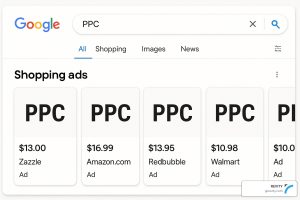Competing in today’s market is more stringent and requires a variety of factors that search engines deem necessary. Read on to learn what on-page SEO is and why it’s becoming integral to a business’s success.
On-Page SEO Definition
On-page SEO is the practice of optimizing individual web pages to rank higher and earn more relevant traffic in search engines. On-page introduces both content and HTML source code of a page, which can be optimized, whereas, off-page refers to links and other external indicators.
See the importance of and essential factors for on-page SEO that you need to know.
The Importance of On-Page SEO
Since search engines need to understand your website and content, as well as identify whether it is relevant to a searcher’s query, on-page SEO is crucial. Search engines are becoming more sophisticated, so there’s a greater focus toward relevance and semantics, not just keywords. For instance, Google’s algorithms are now much better at understanding what users are searching for when they use a search engine and can deliver search results that meet that intent.
It’s been proven that when people illicit a query in search engines, it’s usually in the form of a question, so targeting your article topics and blogs with relevant questions can boost your rankings.
There’s been an increased focus toward off-page techniques, including link building and other technical elements, but without on-page SEO, off-page SEO won’t do you much good. Not only does on-page SEO include high quality, relevant content, it also includes:
-
- HTML tags (title, meta, and header)
- Images
- Websites that have a high level of expertise, authority, and trust
When added together, it takes into account the various aspects of the webpage, which improves your website’s visibility in the search results.
To drive home the importance of on-page SEO, here are 12 factors to consider, which will improve your content and authority, as well as increase your rankings, traffic, and conversions.
Factors to Increase On-Page SEO Rankings
E.A.T (Expertise, Authoritativeness, Trustworthiness) is the framework that Google raters use to evaluate, as a whole, content creators, webpages, and websites. It’s continually playing a role in Google’s organic search results, so follow this model for each page, article, or post.
Headlines should reflect the article or blog post, but it should be compelling enough to rank well on search engines. A great headline can be the difference between a click and an impression, so create them strategically.
The meta description describes what the page is about and often displayed in the SERPs (Search Engine Page Results) underneath the title of the page. This should be descriptive and short, and stuffing keywords here is frowned upon. Using synonyms or latent semantic indexing (LSI) of your primary keyword will keep search engines happy for on-page SEO.
Header tags are used to identify headings & subheadings within your content from other types of text. They’re not crucial to site rankings as they once were, but they still serve an essential function for your SEO and users.
Title tag (HTML tag in the head section of each webpage) gives a clue or context as to the topical subject matter of the respective page it’s on. It should be short but clear and descriptive information.
SEO writing focuses on writing relevant content a user needs for their query on search engines. It’s more than just producing content for the sake of it but involves writing high-quality, relevant, and substantial content.
Keyword cannibalization is competing against yourself when you use the same keyword for multiple pages and confuses search engines. It can be downright devastating to your SEO.
A content audit is crucial and involves identifying if your information in your content is still relevant or evergreen or is outdated or become stale. Also, evaluate if your existing content is successful in reaching its goals and gaining ROI.
Image optimization is a great way to improve your website’s appeal. It has advantages that include better user experience, faster page load times, and offers additional ranking opportunities for showing up on Google Image Search. Still, some can slow down your website, so it’s vital to optimize images correctly.
User engagement involves ensuring users will continue on your site, viewing your content and interacting with it, and, better, keep coming back for more content. To retain users–a challenge, but doable–focus on elements such as user experience, content optimization, and site speed, and more.
Mobile user experience accounts for approximately 60 percent of users; this means if your website isn’t mobile-friendly, you’re losing over half of your potential traffic. Test your website on mobile, as a real user would, and ensure everything is displayed correctly, and there are no broken links.
Comments are still essential to include at the end of a post or article and allude to people enjoying your content and interacting with the page, which can boost your SEO.
If you need help with your SEO rankings and want a highly trained and experienced team to manage your website, let us know. REVITY can take your SEO to the next level with our strategic placement algorithm, proven successful.
































